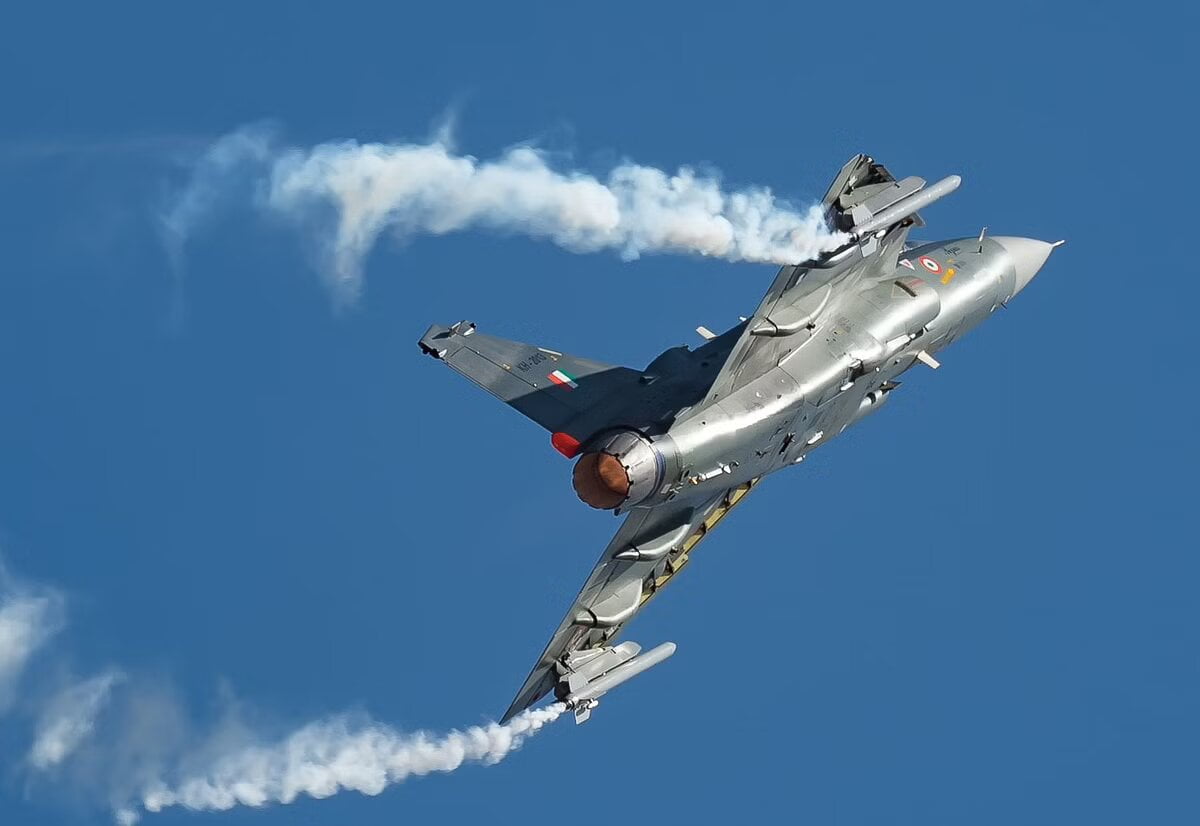The Korean media say that the Malaysian Air Force has “almost confirmed” that the FA-50 block 20 was chosen for the tender for 18 jets as part of the Lead In Trainer-Light Combat Aircraft, or FLIT-LCA, programme.
A representative of Korean Aerospace Industries was quoted by SBS News on September 13 as saying, “The negotiations for exporting 18 FA-50s worth 1 trillion won to Malaysia are also about to start.”
SBS also says that the number of FA-50s exported to Poland and Malaysia together is more than the total number of FA-50s exported in the past, including the same-type T-50 training aircraft. KAI has signed a contract with Poland to sell 48 FA-50.
The news source also says that KAI is working on putting the advanced AESA radar that was made for the Korean supersonic fighter KF-21 on the FA-50 and improving its air-to-air weapons.
The official claim from KAI was not backed up by the Malaysian Air Force, and Indian officials called it a guess.
In July of this year, a Singapore-based news outlet called “Global Business Press,” citing sources, said that RMAF commander General Asghar Khan Goriman Khan had “evinced” a preference for the “cheap and efficient supersonic advanced light attack platform” over other aircraft. It also said that the contract should be finished if the current government wins the next election. Malaysia is likely to hold early general elections before July 2023, when the current Parliament’s term ends. The Defense Acquisition Program Administration (DAPA) of Korea, on the other hand, said that the news was not true.
Malaysian FLIT-LCA tender
As part of the FLIT-LCA (Lead In Trainer-Light Combat Aircraft) programme, Malaysia has put out a request for proposals (RFP) for 18 jets. According to the Royal Malaysian Air Force’s (RMAF) Capability Development 2055 policy, Malaysia’s FLIT project plans to buy 18 light combat aircraft now and another 18 jets in 2025.
The FA-50 from Korea Aerospace Industries, the Sino-Pakistani JF-17 from Pakistan Aeronautical Complex and Chengdu Aircraft Corporation, the Italian M-346 from Leonardo, the Indian Tejas Mk 1 from Hindustan Aeronautics Limited (HAL), and the Russian Yak-130 are all possible competitors.
The issues with the KAI offer
About four months ago, Korea and KAI agreed that if they were chosen for the light fighter tender, they could get up to 50% of the payment in palm oil and other products. Before that, Korea was against the idea, but it had to give in because India, Pakistan/China, and Russia, the other competitors, had already agreed to the Malaysian condition. Malaysia already sends palm oil to three of these countries. In other words, the FA-50 was a model that was likely to be thrown out because it did not accept the option to pay for palm oil.
Also, Malaysia was worried that some aircraft companies, especially those that made planes made in the West, would not bid if palm oil payment was an option.
Another problem is that FA-50 doesn’t yet have a 300-gallon conformal tank that is just for it. The FA-50 does not yet have a receptive conformal tank or a device for refuelling in the air. But a flying boom for refuelling from the air that was made for the T-50A, an older version of the FA-50, has finished its flight test. No one knows if the certification for airworthiness or penetrating has been done.
As was already said, an AESA and a Beyond Visual Range missile have not yet been added to the FA-50.
The Indian LCA Tejas doesn’t have any of these problems, but Malaysia doesn’t like the Israeli AESA radar system that is built into the plane. HAL is already working to add the Indian Uttam AESA radar to the Tejas, though. Tejas is also the only plane in the world that has been tested with weapons from India, Russia, the US, France, and Israel. From a logical point of view, HAL could get the full plane to Malaysia faster than KAI.
Both KAI and HAL have agreed to build the final assembly lines in Malaysia. Here, too, HAL is better than KAI because it can fix the Russian-made SU-30 planes used by the Malaysian Air Force. The Indian Air Force has already taught Malaysian Air Force pilots how to fly SU-30 planes, and they practise with the RMAF regularly. Since IAF uses LCA Tejas, these practises will stay the same.
HAL’s proposal to Malaysia
In October 2021, HAL gave the Malaysian Ministry of Defense their plan (MINDEF). HAL thought that the Tejas LIFT (Lead in Fighter Trainer) model with two seats had a good chance of winning the competition because it met all of the RMAF’s requirements.
On August 18, HAL signed an agreement to open an office in Kuala Lumpur. The KL office will be in charge of spreading the word about HAL’s products and services all over South East Asia.
